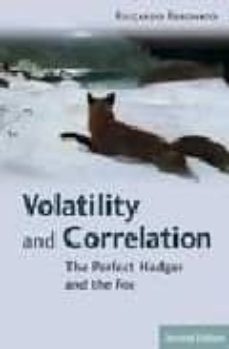Imprescindibles
Ficción
No Ficción
Ciencias y tecnología BiologíaCienciasCiencias naturalesDivulgación científicaInformáticaIngenieríaMatemáticasMedicinaSalud y dietas Filología BiblioteconomíaEstudios filológicosEstudios lingüísticosEstudios literariosHistoria y crítica de la Literatura
Humanidades Autoayuda y espiritualidadCiencias humanasDerechoEconomía y EmpresaPsicología y PedagogíaFilosofíaSociología Historia ArqueologíaBiografíasHistoria de EspañaHistoria UniversalHistoria por países
Infantil
Juvenil
Cómic y manga
Novela gráfica Novela gráfica americanaNovela gráfica europeaNovela gráfica de otros países Personajes, series y sagas Series y sagasStar Wars Superhéroes Cómics DCCómics MarvelCómics otros superhéroesCómics Valiant
eBooks
Literatura ContemporáneaNarrativa fantásticaNovela de ciencia ficciónNovela de terrorNovela históricaNovela negraNovela romántica y erótica Juvenil Más de 13 añosMás de 15 años Infantil eBooks infantiles
Humanidades Autoayuda y espiritualidadCiencias humanasEconomía y EmpresaPsicología y PedagogíaFilosofía Historia Historia de EspañaHistoria Universal Arte CineMúsicaHistoria del arte
Ciencia y tecnología Ciencias naturalesDivulgación científicaMedicinaSalud y dietas Filología Estudios lingüísticosEstudios literariosHistoria y crítica de la Literatura Estilo de vida CocinaGuías de viajeOcio y deportes
RICCARDO REBONATO
Recibe novedades de RICCARDO REBONATO directamente en tu email
Filtros
Del 1 al 2 de 2
LEA 9780470091395
The new edition of "Volatility and Correlation" has been thoroughly updated and expanded with over 80ew or reworked material, reflecting the changes and developments that have taken place in the field. The new and updated material includes: empirical and theoretical analysis of the smile dynamics; examination of the perfect-replication model in relation to exotic options; treatment of additional important models, namely, Variance Gamma, displaced diffusion, CEV, stochastic volatility for interest-rate smiles and equity/FX options; questioning of the informational efficiency of markets in commonly-used calibration and hedging practices. The book is split into four sections. Part I deals with a deterministic-volatility Black world (no smiles), and sets out the author''s ''philosophical'' approach to option pricing. Part II deals with smiles in the equity and FX worlds. Beginning with a review of relevant empirical information about smiles, this part provides coverage of local-stochastic-volatility, general-stochastic-volatility, jump-diffusion and Variance-Gamma processes. Part II concludes with an important chapter that discusses if and to what extent one can dispense with an explicit specification of a process-based model, and can directly prescribe the dynamics of the smile surface. Part III focuses on interest rates, and part IV extends the setting used for the deterministic-volatility LIBOR market model in order to account for interest-rate smiles in a financially-motivated and computationally-tractable manner. In this final part the author deals, in increasing levels of complexity, with CEV processes, with diffusive stochastic volatility and with Markov-chain processes. Covering FX, equity and interest-rate products, "Volatility and Correlation" is a blend of theoretical and practical material and is designed for traders, risk managers, financial professionals and students. ''The second edition is even more comprehensive than the first, and ideally suited to quantitatively oriented traders and risk managers. Rebonato has a knack for distilling the essence from a wide range of complex option pricing models.'' Darrell Duffie, Stanford University, USA ''The author has greatly extended the first edition of this book, whose main merit remains its courage t
Ver más
Tapa dura
PRINCETON UNIVERSITY PRESS 9780691089737
In recent years, interest-rate modeling has developed rapidly in terms of both practice and theory. The academic and practitioners'' communities, however, have not always communicated as productively as would have been desirable. As a result, their research programs have often developed with little constructive interference. In this book, Riccardo Rebonato draws on his academic and professional experience, straddling both sides of the divide to bring together and build on what theory and trading have to offer. Rebonato begins by presenting the conceptual foundations for the application of the LIBOR market model to the pricing of interest-rate derivatives. Next he treats in great detail the calibration of this model to market prices, asking how possible and advisable it is to enforce a simultaneous fitting to several market observables. He does so with an eye not only to mathematical feasibility but also to financial justification, while devoting special scrutiny to the implications of market incompleteness. Much of the book concerns an original extension of the LIBOR market model, devised to account for implied volatility smiles. This is done by introducing a stochastic-volatility, displaced-diffusion version of the model. The emphasis again is on the financial justification and on the computational feasibility of the proposed solution to the smile problem. This book is must reading for quantitative researchers in financial houses, sophisticated practitioners in the derivatives area, and students of finance.
Ver más
Tapa dura
Del 1 al 2 de 2



























